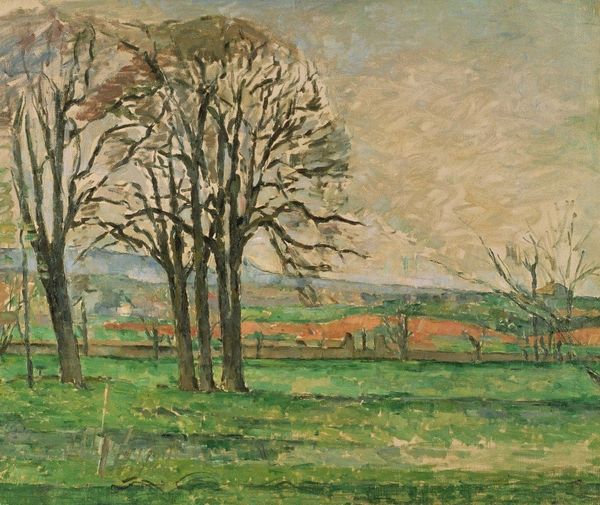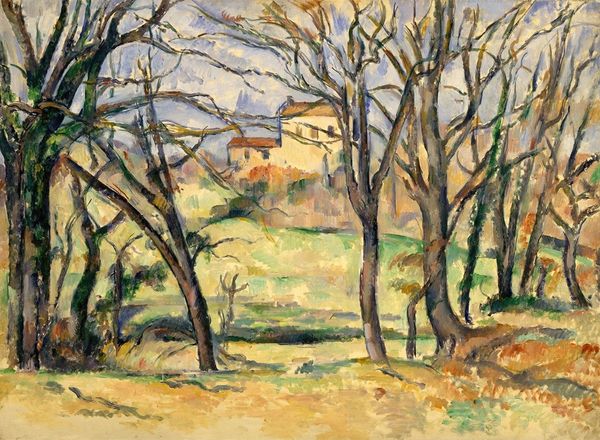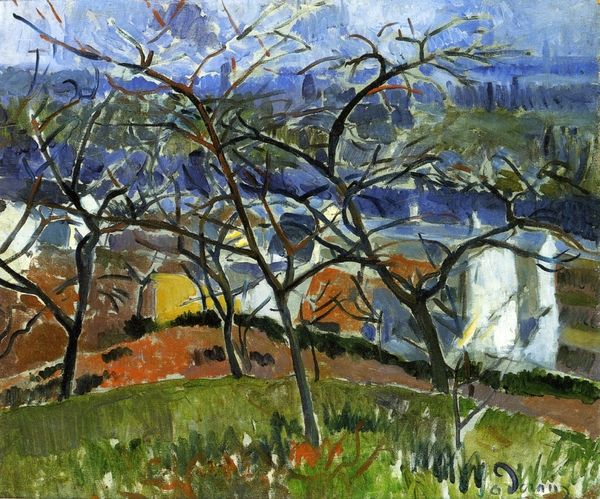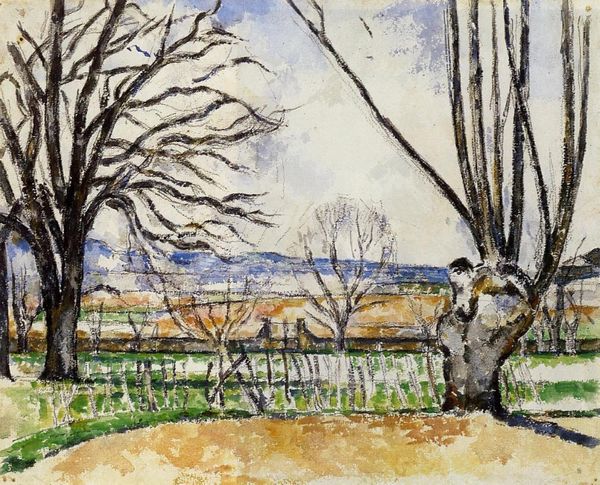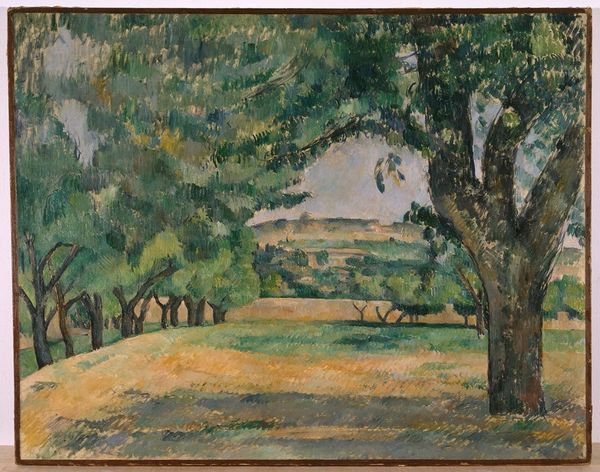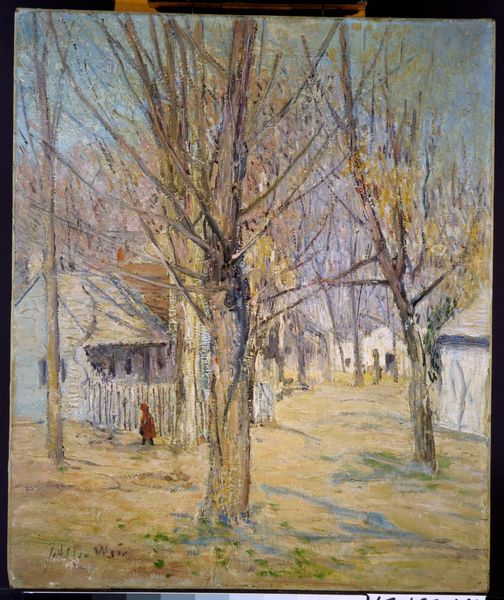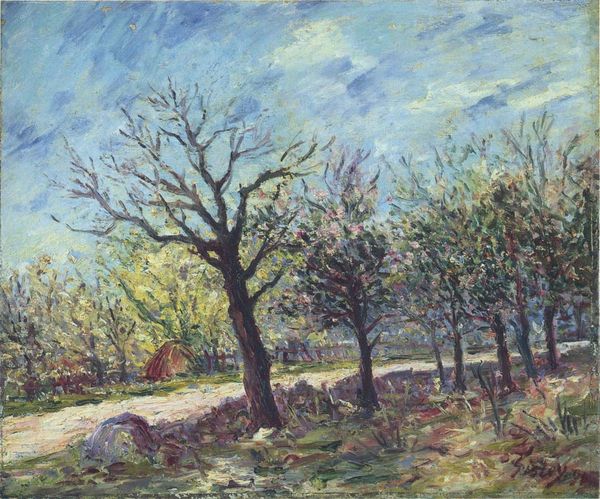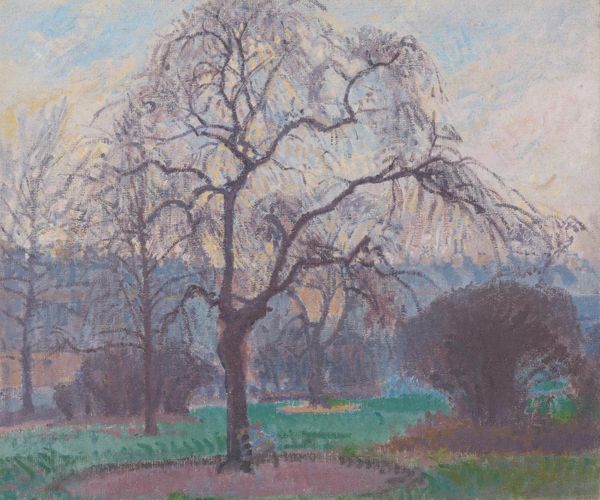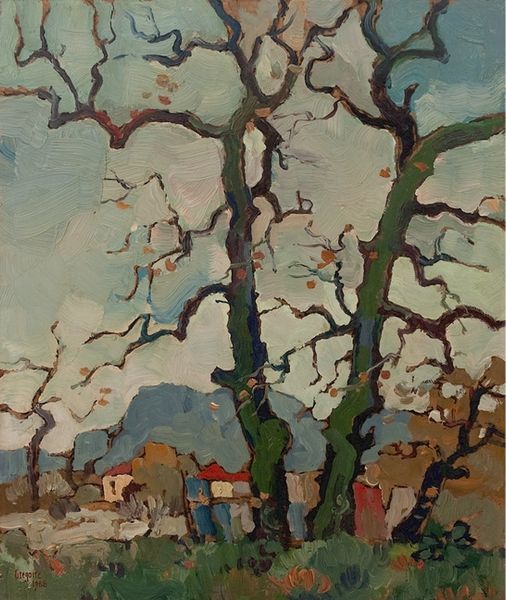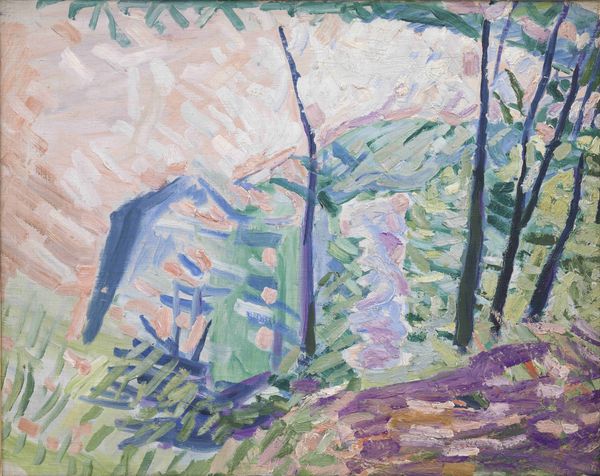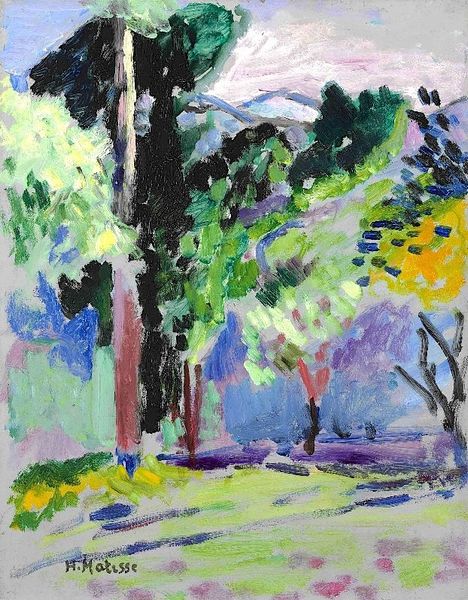
Copyright: Public Domain: Artvee
Curator: This is Paul Cézanne's "Chestnut Trees at Jas de Bouffan," painted around 1885 or 1886. It’s an oil on canvas depicting a landscape near his family home in Aix-en-Provence. Editor: You know, I love the chilliness of it! Those bare trees against the soft, almost milky sky, make it seem like it’s just on the cusp of winter, when the world holds its breath. Curator: The interesting thing is that Jas de Bouffan, and especially this view, recurs throughout Cézanne’s oeuvre. It provides a lens to view his changing relationship to both Impressionism and Post-Impressionism, also engaging themes of domesticity and belonging that emerge through his frequent return to this familiar landscape. Editor: Belonging... that's interesting. I feel that, but I also see this sense of restless searching within each brushstroke. He is looking at a place that he loves but struggling to connect on a deep level, at least as he struggles to put it on canvas. It's so thick, all those layers! Like he's scraping feeling into the paint itself. Curator: Absolutely. This painting reveals Cézanne's construction of form, an emphasis on planes and geometric shapes rather than precise detail. He’s pulling apart and rebuilding the landscape through pure painting. Consider how this breaks with the Impressionist desire to only reproduce light as it is cast on a motif. Instead, Cézanne looks at form in the landscape almost scientifically, focusing on volume, shape, and color interactions. Editor: Form is very clinical for this! All the shapes and their volume, it feels less like looking *at* trees and more like standing *with* them. Even those buildings nestled behind…I'd love to go explore that house; wonder what's cooking! What does this domestic belonging look like when the kitchen fires are lit, in contrast with the winter trees outside. Curator: Thinking of Jas de Bouffan as a character, a consistent muse, is interesting because it reveals much about not only Cézanne but also about art making. He found infinite nuance in his life but it only made his process of rendering that life more complex. He’s caught in a cycle of constant creative striving for his motif and also with the legacy of landscape traditions. Editor: Right, a cycle. We look at this snapshot and enter into his own restless viewing. Thanks for giving that window onto his painting.
Comments
No comments
Be the first to comment and join the conversation on the ultimate creative platform.
